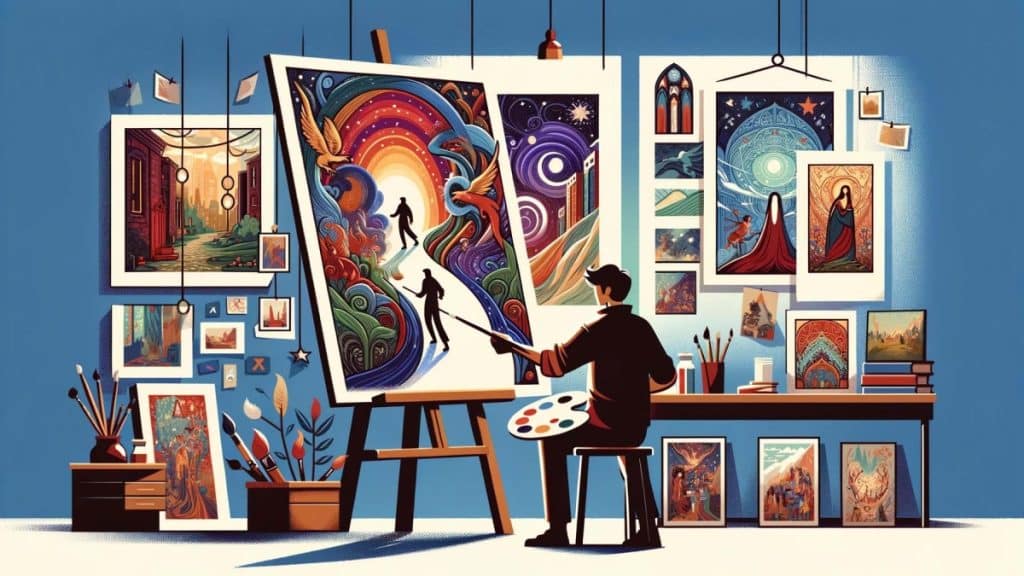In the world of fine art reproduction, few advancements have had as profound an impact as giclée printing. This technique has revolutionized the way artists and collectors approach the creation, distribution, and preservation of artworks. From its origins in the late 20th century to its current status as the gold standard for art reproduction, giclée printing has set a benchmark for quality and longevity that other methods struggle to match.
What Is Giclée Printing?
The term “giclée” (pronounced “zhee-clay”) comes from the French word “gicler,” meaning “to spray.” It refers to the process by which high-quality inkjet printers spray microscopic droplets of ink onto a surface to create an image. Unlike traditional printing methods, which use screens or plates to transfer ink, giclée printing relies on advanced digital technology and archival-grade materials to produce museum-quality reproductions of original artworks.
How Giclée Printing Works
The giclée printing process begins with a high-resolution digital scan or photograph of the original artwork. This digital file is meticulously color-corrected to ensure that the printed reproduction matches the original as closely as possible. The image is then printed using pigment-based inks on high-quality substrates, such as fine art paper or canvas.
The printers used for giclée printing are not ordinary inkjet machines. They are equipped with up to 12 color cartridges, allowing for an exceptional color gamut and gradient accuracy. This capability results in reproductions that are virtually indistinguishable from the original artwork.
Advantages of Giclée Printing
- Superior Quality and Detail Giclée prints capture every fine detail of the original artwork, from subtle textures to the nuances of color. This makes them ideal for reproducing complex pieces such as oil paintings, watercolors, and photographic art.
- Archival Longevity One of the standout features of giclée printing is its durability. Pigment-based inks used in the process are resistant to fading, ensuring that prints retain their vibrancy for decades, even under challenging environmental conditions. Paired with acid-free paper or canvas, giclée prints can last over 100 years without significant degradation.
- Versatility Giclée printing works well on a wide range of materials, including canvas, textured fine art paper, and even metal. This versatility allows artists to experiment with different mediums and textures to achieve the desired effect.
- Accessibility for Artists Giclée printing allows artists to produce limited-edition prints of their work without the upfront costs and logistical challenges associated with traditional printing methods. It’s a cost-effective way to reach new audiences and generate additional income.
- Customizability Each giclée print can be customized to meet specific requirements, such as size or framing preferences. This level of personalization makes giclée printing an attractive option for both artists and buyers.
Applications of Giclée Printing
The versatility of giclée printing has made it a popular choice across various fields:
- Fine Art Reproduction: Artists use giclée printing to create high-quality reproductions of their original works, making art more accessible to a wider audience without compromising quality.
- Photography: Photographers value giclée printing for its ability to produce rich, lifelike images with exceptional color accuracy and depth.
- Interior Design: Designers often incorporate giclée prints into their projects, appreciating the durability and aesthetic appeal of these reproductions.
- Archival Preservation: Museums and galleries use giclée printing to create replicas of valuable or fragile artworks, ensuring that the originals remain preserved while still being displayed.
Why Giclée Printing Is Revolutionizing Fine Art
The rise of giclée printing has disrupted the traditional art reproduction industry by offering a level of quality and affordability previously unattainable. Here are some key ways it is transforming the field:
- Empowering Artists Giclée printing allows artists to maintain control over their work. They can reproduce their art in small batches, ensuring exclusivity while still meeting demand. This flexibility enables them to cater to collectors and casual buyers alike.
- Democratizing Art Ownership By making high-quality reproductions accessible, giclée printing has opened up the world of fine art to a broader audience. Collectors who might not have been able to afford an original piece can now own a faithful reproduction.
- Enhancing Environmental Sustainability Giclée printing is an eco-friendly alternative to traditional methods, as it eliminates the need for chemical-intensive processes and large-scale production runs. Many artists and studios prioritize this sustainable option.
- Fostering Innovation The adaptability of giclée printing encourages experimentation. Artists can push boundaries by blending traditional and digital techniques, exploring new textures, and creating immersive visual experiences.
Tips for Choosing a Giclée Printing Service
When selecting a giclée printing service, consider the following factors:
- Material Quality: Ensure the provider uses archival-grade inks and substrates to guarantee durability.
- Reputation: Look for services with a track record of producing high-quality prints for artists and photographers.
- Customization Options: Choose a provider that offers a range of materials, sizes, and finishing options to suit your needs.
- Proofing Process: Verify that the service includes a proofing stage to ensure color accuracy and detail before final production.
Conclusion
Giclée printing has truly revolutionized the fine art industry by combining cutting-edge technology with traditional artistry. Its ability to produce stunning, durable reproductions has not only transformed the way artists share their work but has also made fine art more accessible to collectors and enthusiasts. Whether you’re an artist looking to expand your audience or a collector seeking exceptional quality, giclée printing offers a remarkable solution. With its commitment to precision and longevity, this technique continues to redefine the standards of art reproduction in the modern era.
